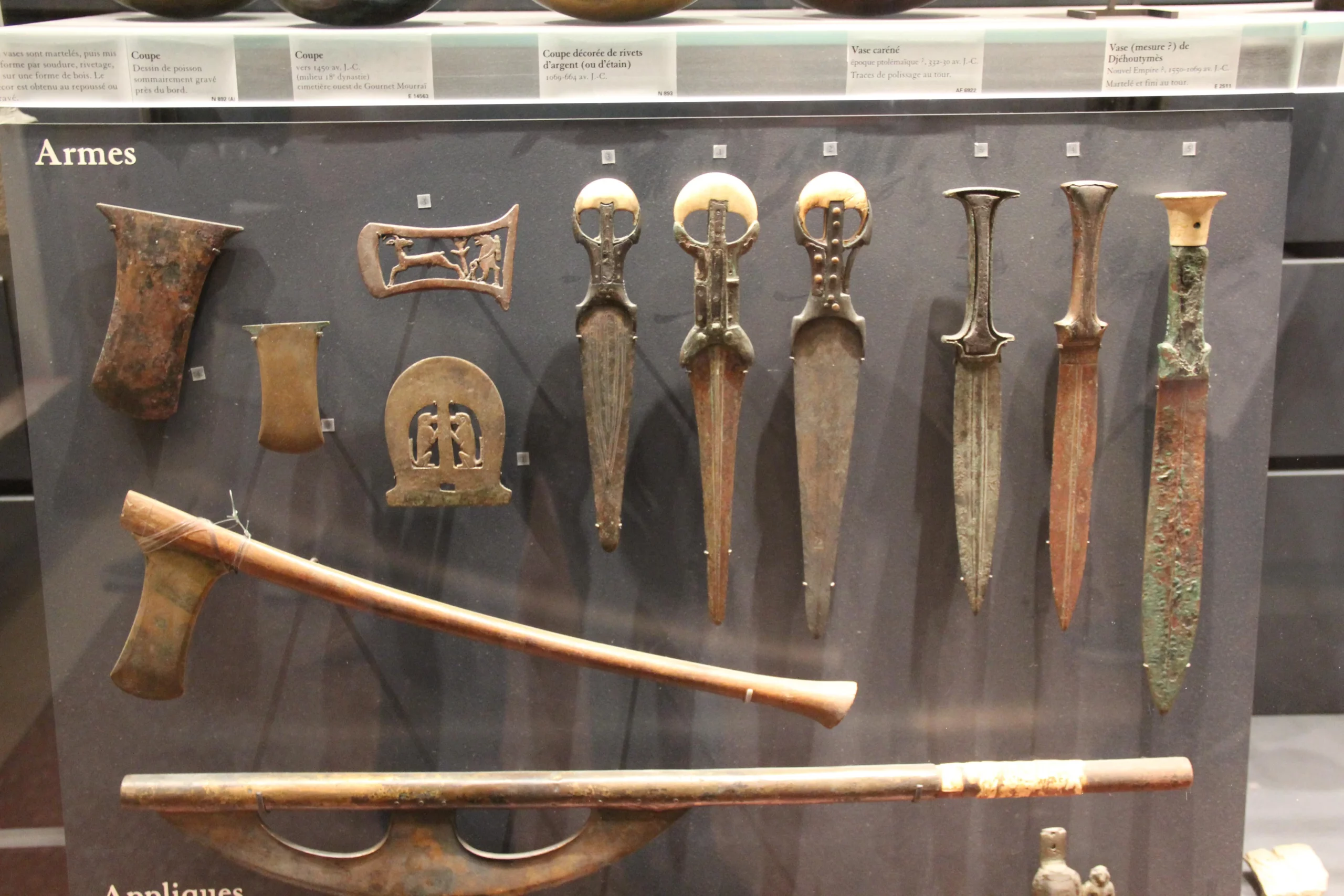The ancient Egyptians were known for their advanced civilization, and their weaponry was no exception. These Weapons of Egypt, crafted with precision and skill, played a crucial role in Egypt’s military successes. The range of weapons used by the ancient Egyptians included everything from simple tools to complex machinery. This article will delve into the fascinating world of Ancient Egyptian weapons, exploring their design, use, and significance in the context of Egypt’s history.
Get your dose of History via Email
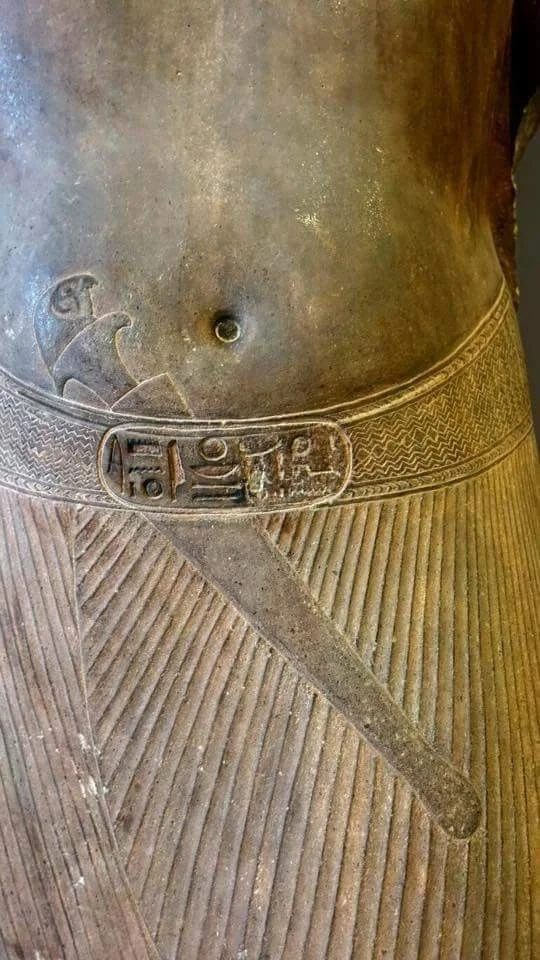
What weapons do ancient Egyptians use?
The Ames Scepter
The Ames Scepter was a ceremonial weapon used by the Pharaohs of Ancient Egypt. It was a symbol of power and authority, often depicted in hieroglyphics and art. The scepter was typically made from precious materials like gold and lapis lazuli, reflecting its high status.
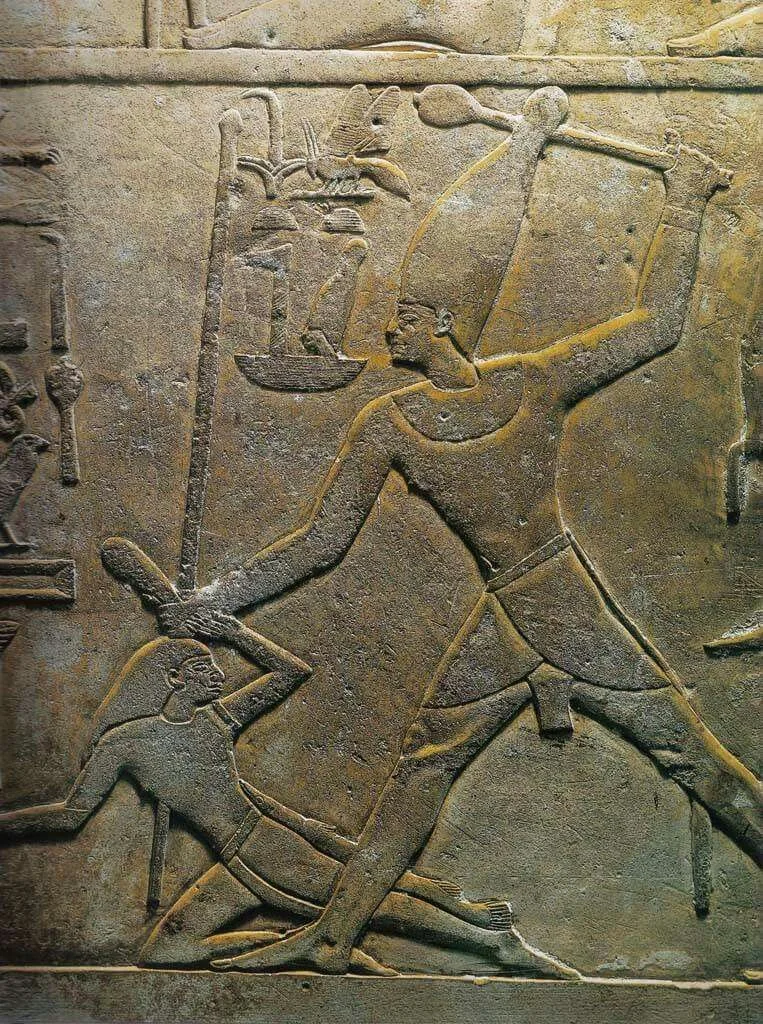
Despite its ceremonial nature, the Ames Scepter was not just for show. It had a sharp point at one end that could be used as a weapon if necessary. This dual purpose underscores the Pharaoh’s role as both a religious leader and a military commander.
Today, examples of the Ames Scepter can be found in museums around the world, serving as a testament to the grandeur and power of Egypt’s ancient rulers.
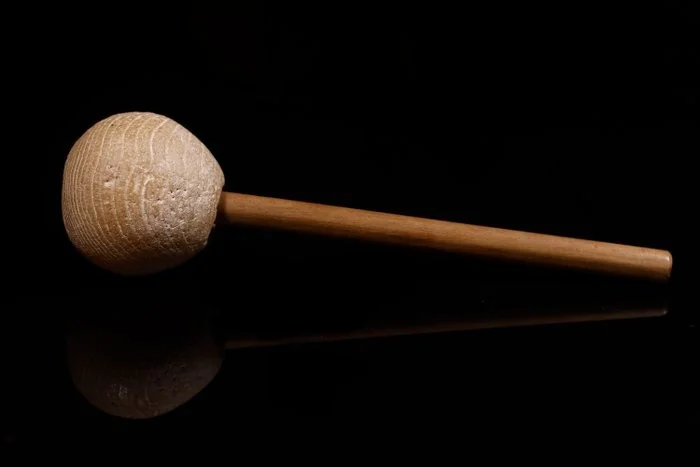
Ancient Egypt’s Shields and Armor
Shields and armor were essential components of an Egyptian soldier’s equipment. Shields were typically made from animal hide stretched over a wooden frame. They were large enough to cover most of the body, providing effective protection against enemy attacks.
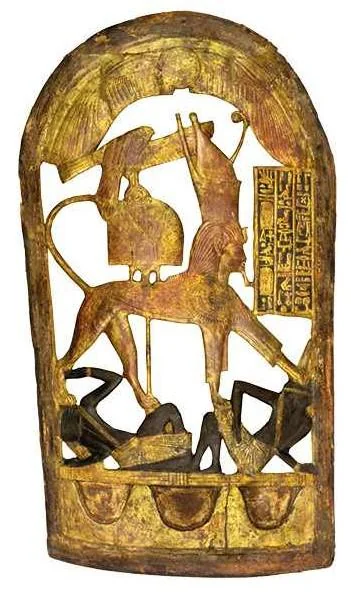
Armor was less common due to Egypt’s hot climate. However, during periods of intense warfare, soldiers would wear leather or linen armor reinforced with metal scales or plates. This type of armor offered additional protection without significantly hindering movement. During the Roman occupation of Egypt, Crocodile Skin Armor was created, which was heavy but offered more protection.
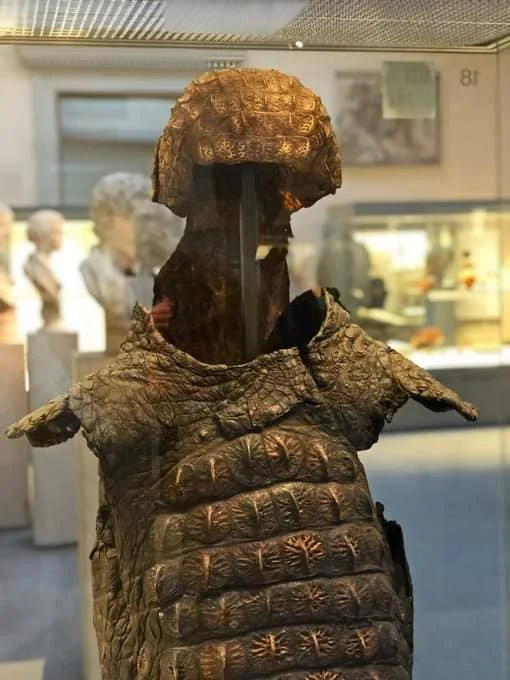
The use of shields and armor demonstrates the strategic thinking that went into Egypt’s military tactics. These defensive tools allowed soldiers to withstand enemy attacks and stay in the fight longer.
Ancient Egyptian Bow and Arrows
The bow and arrow was a staple weapon in the Egyptian arsenal. Bows were made from wood, with sinew or plant fiber used for the string. Arrows were typically made from reeds, with flint or copper tips.
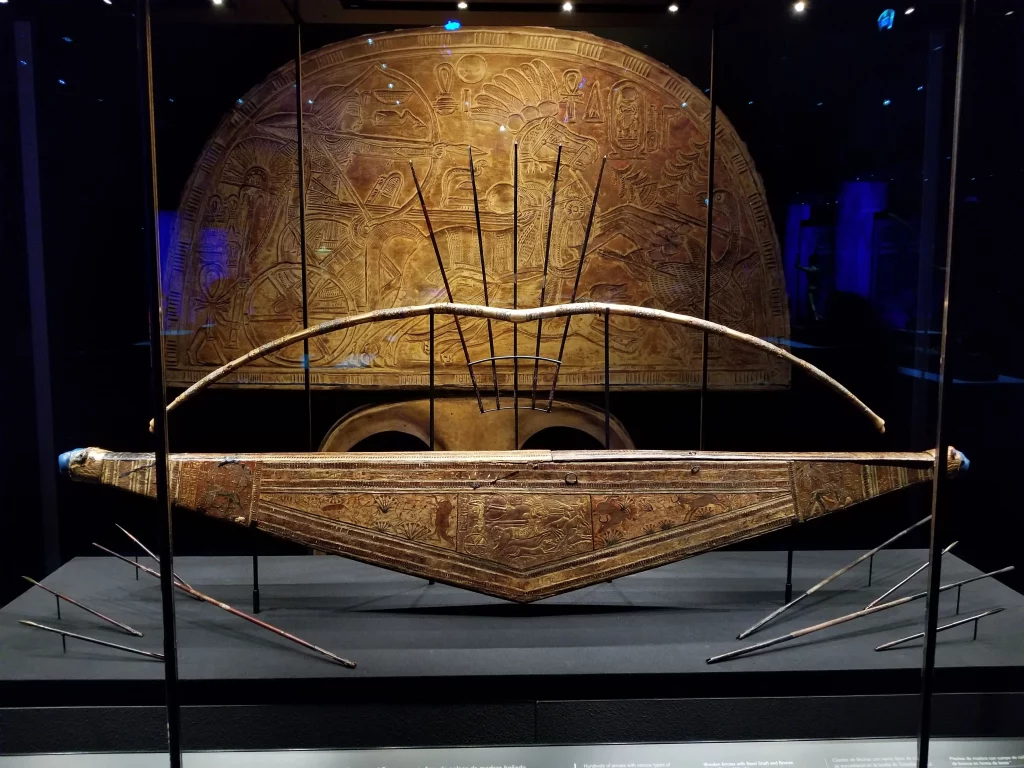
Archery was highly valued in Egyptian society, and proficiency with a bow was a mark of a skilled warrior. The range and accuracy of the bow made it an effective weapon for both hunting and warfare.
Over time, the Egyptians developed more advanced types of bows, such as the composite bow. This type of bow was made from multiple materials, allowing it to store more energy and shoot arrows further.
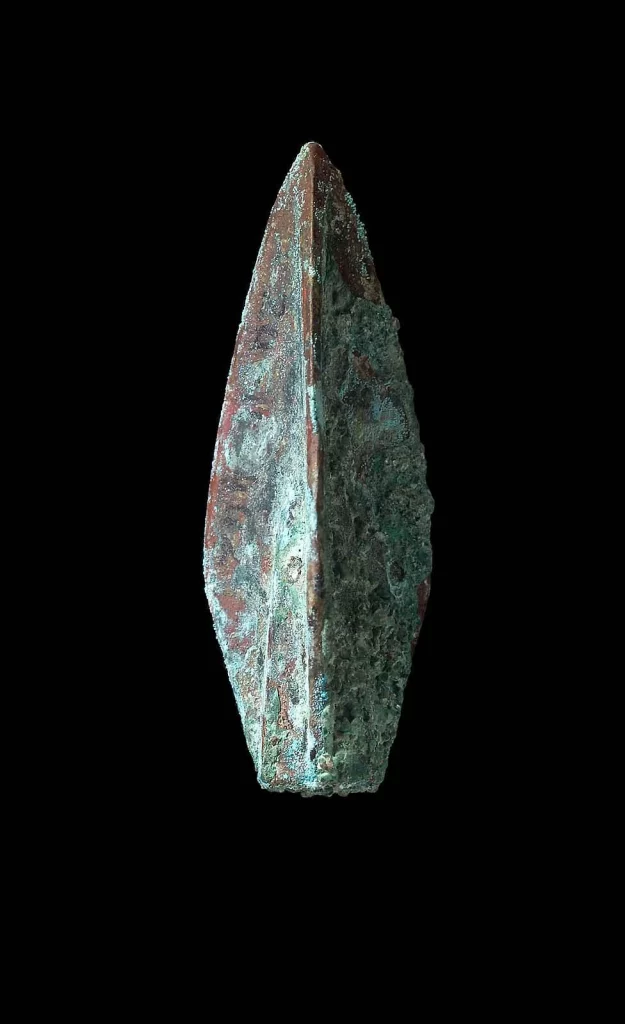
Egyptian Axes
Axes were another common weapon of Ancient Egypt. Early axes were simple tools made from stone or copper, but over time they evolved into more sophisticated weapons. By the New Kingdom period, battle axes with wooden handles and bronze heads were common.
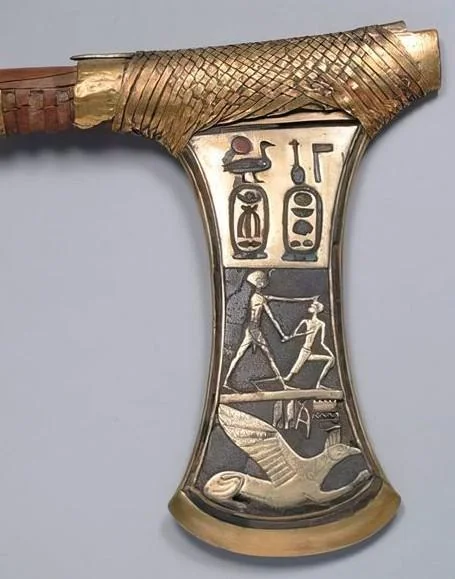
Axes were used both as a tool and as a weapon. They could be used to chop wood or build structures, but they could also be used in combat. The sharp edge of an axe could easily penetrate an enemy’s shield or armor.
The versatility of the axe made it a valuable asset for any Egyptian soldier. Whether on the battlefield or at home, an axe was always useful.
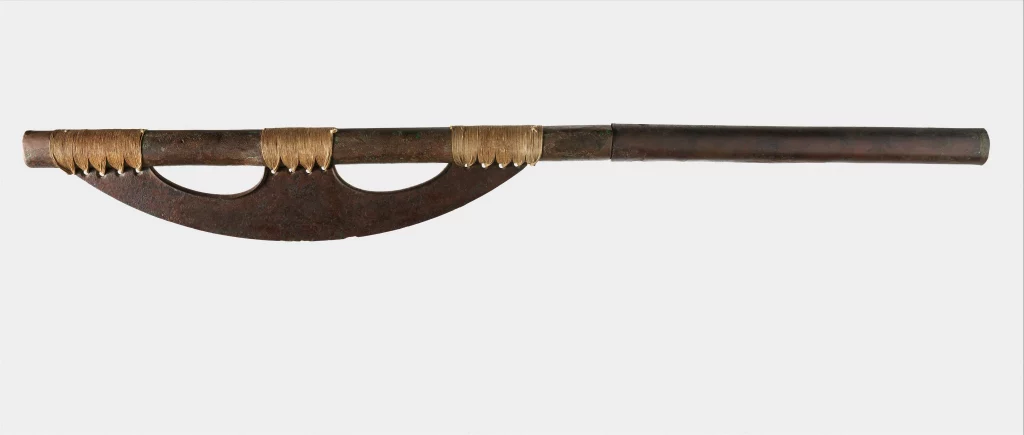
Chariots
Chariots were introduced to Egypt by the Hyksos during the Second Intermediate Period. They quickly became a key component of Egypt’s military strategy. Chariots were typically drawn by two horses and could carry two people: a driver and an archer.
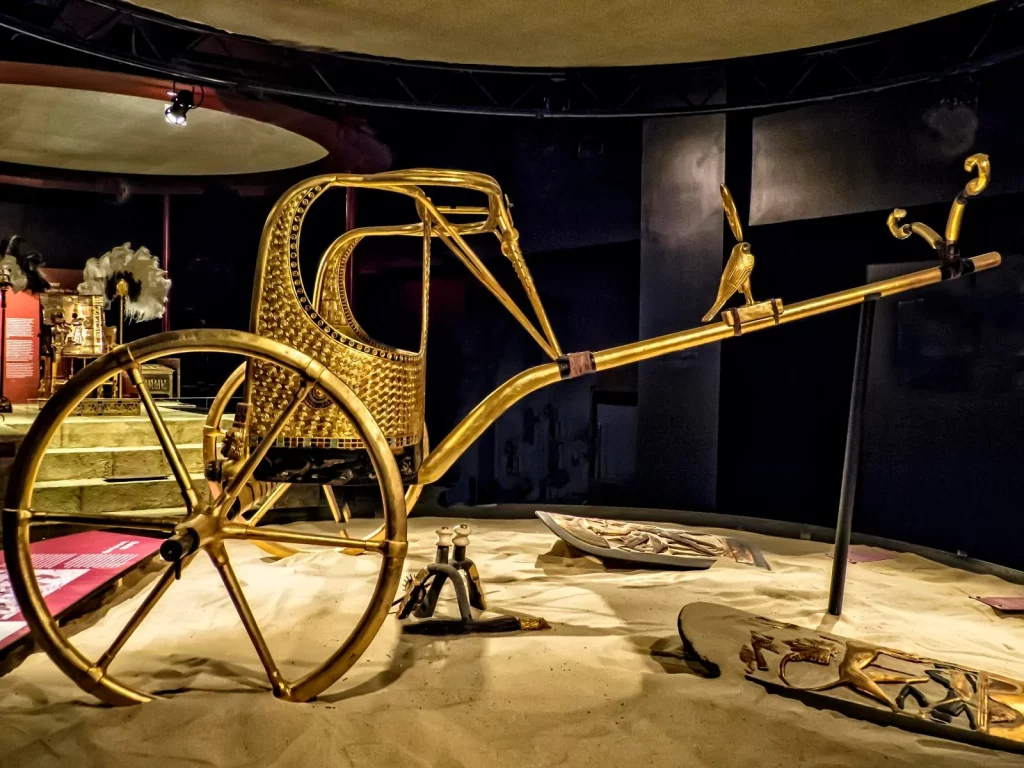
The speed and mobility of chariots gave the Egyptians a significant advantage on the battlefield. They could quickly move troops, launch surprise attacks, or retreat if necessary. The chariot was also a symbol of status and power, often used by the Pharaoh and his generals.
Despite their advantages, chariots were not without their drawbacks. They were expensive to produce and required skilled drivers to operate effectively. Nevertheless, their impact on Egyptian warfare was undeniable.
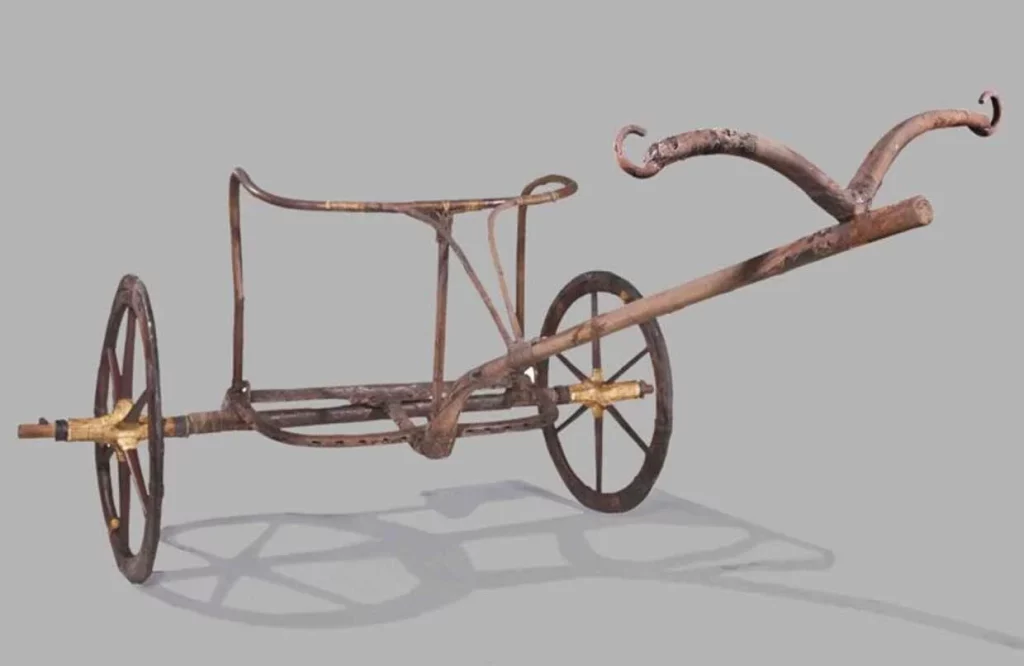
Spears and Harpoons
Spears were a common weapon in ancient Egypt, used by both infantry and chariot riders. They were typically made from wood with a metal tip, although some spears were entirely made of metal. Spears could be thrown or used for thrusting in close combat.
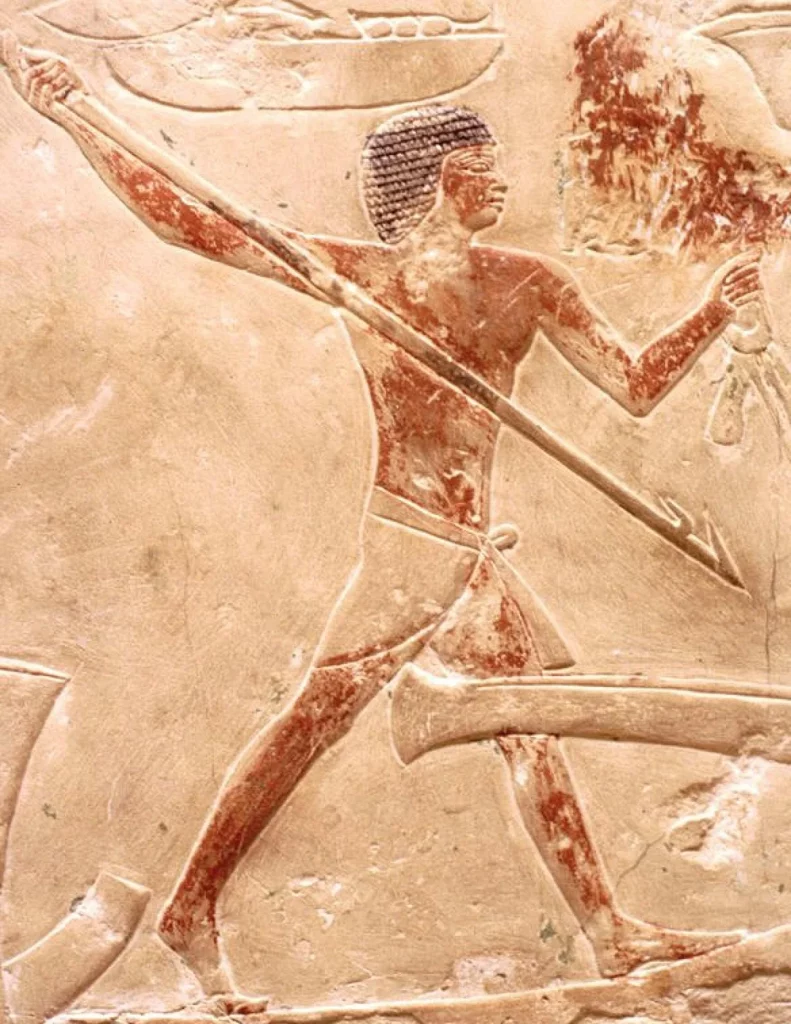
Harpoons were similar to spears but had a barbed tip to prevent prey from escaping. They were primarily used for hunting fish or waterfowl in the Nile River. However, they could also be used as weapons in times of war.
The use of spears and harpoons highlights the dual nature of many Egyptian weapons. These tools were not just for warfare; they were also essential for survival in Egypt’s harsh environment.
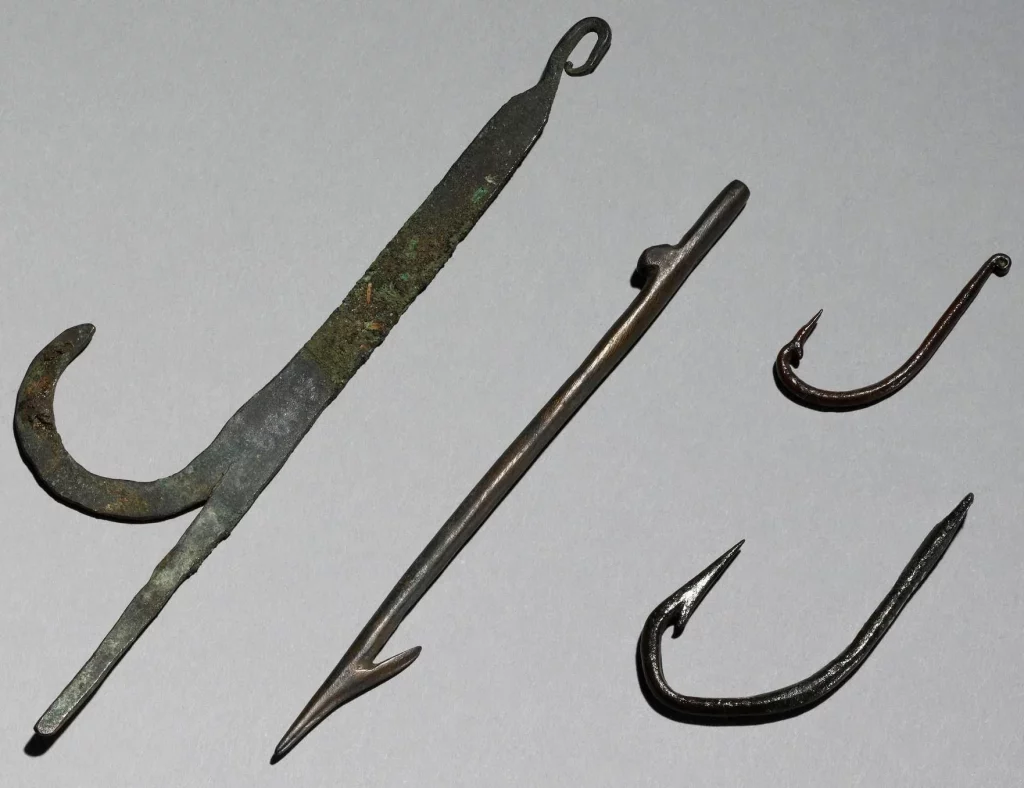
Knives and Daggers
Knives and daggers were another common weapon in ancient Egypt. Early examples were made from flint or copper, but by the New Kingdom period, bronze and iron knives were more common.
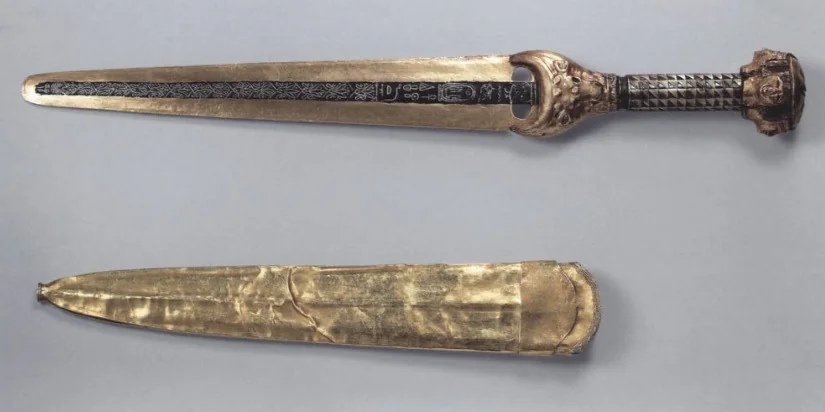
These weapons were used for a variety of purposes, from hunting and cooking to combat. The size and shape of the knife would vary depending on its intended use. For example, hunting knives typically had a curved blade for skinning animals, while combat knives had a straight blade for stabbing.
Like many Egyptian weapons, knives and daggers served multiple purposes. They were tools for everyday life as well as weapons for warfare.
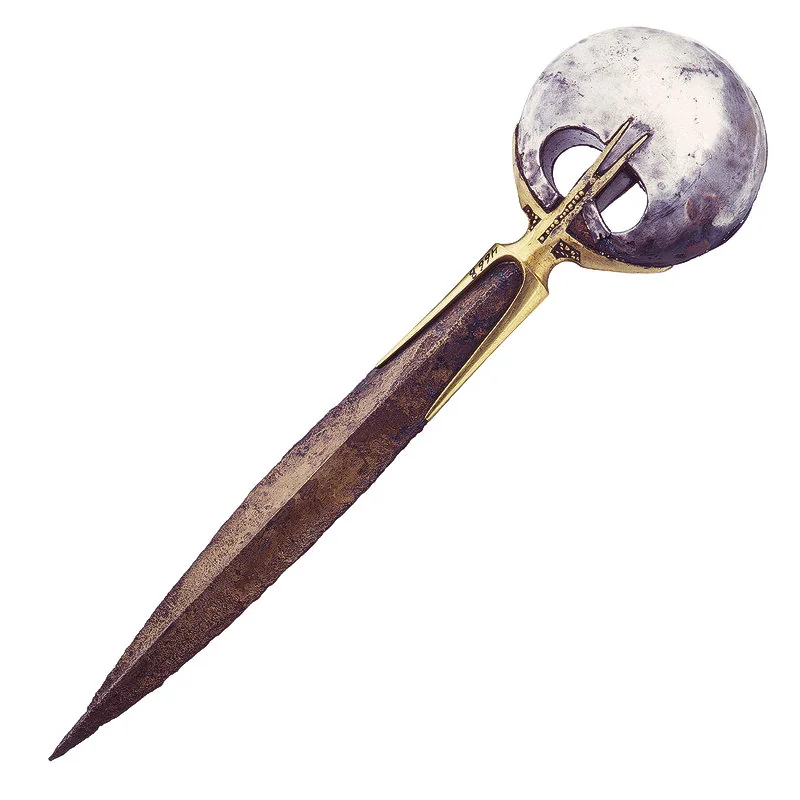
Slings (slingshots)
Slings were a simple but effective weapon used by the ancient Egyptians. They consisted of a small pouch attached to two strings. The user would place a stone in the pouch, swing the sling around their head, and release one of the strings to launch the stone at high speed.
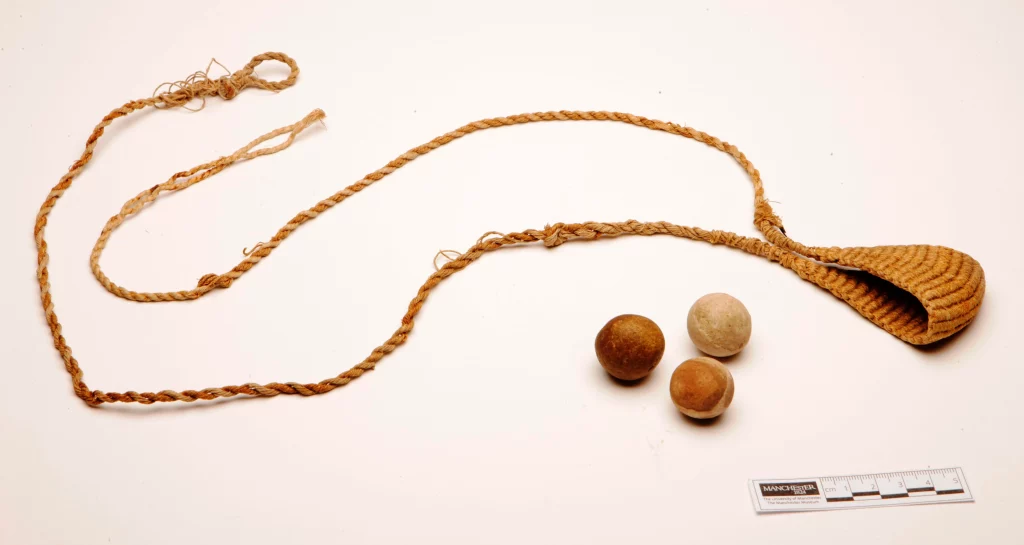
Slings were easy to make and use, making them a popular weapon among the lower classes. Despite their simplicity, slings could be deadly in the hands of a skilled user. A well-aimed stone could incapacitate or even kill an enemy.
The use of slings demonstrates the ingenuity of the ancient Egyptians. Even with limited resources, they were able to develop effective weapons for warfare.
Throw Sticks / Throwing Sticks
Throw sticks were another simple but effective weapon used by the ancient Egyptians. They were typically made from wood and shaped like a boomerang. When thrown correctly, a throw stick could hit multiple targets or return to the thrower.
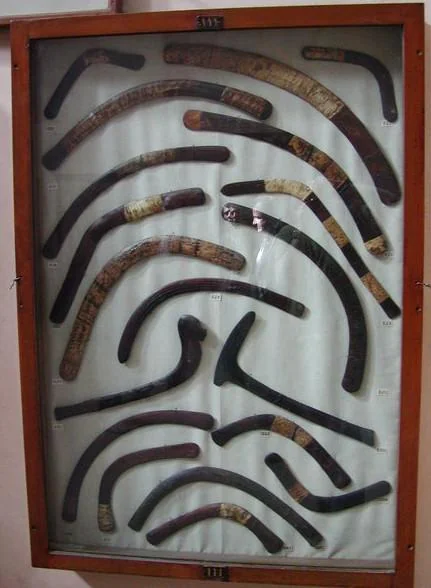
Throw sticks were primarily used for hunting birds or small game. However, they could also be used as weapons in warfare. The versatility and ease of use made throw sticks a popular tool among the ancient Egyptians.
The use of throw sticks highlights the practicality of Egyptian weaponry. These tools were not just for warfare; they were also essential for survival in Egypt’s harsh environment.
The Khopesh
The khopesh was not from Egyptian Mythology, it was a real and unique weapon used by the ancient Egyptians. It was a type of sword with a curved blade that resembled a sickle. The khopesh was typically made from bronze and could be used for slashing or stabbing.
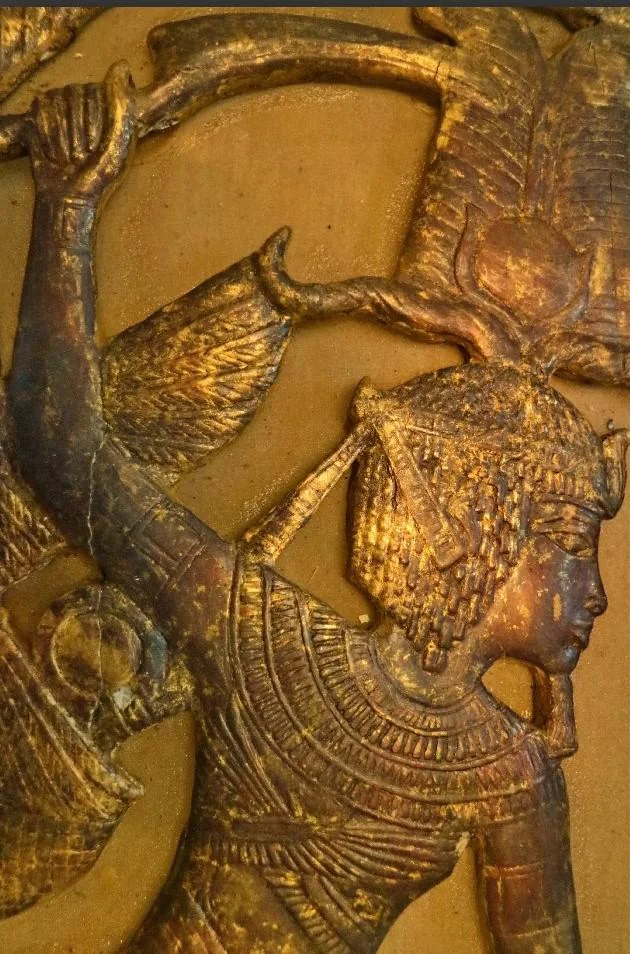
The khopesh was often associated with royalty and the gods. Many Egyptian pharaohs were depicted holding a khopesh, symbolizing their power and authority. The god Ra was also often shown with a khopesh, reinforcing its divine status.
Despite its symbolic significance, the khopesh was also a practical weapon. Its unique design made it effective in close combat, and its high status made it a coveted prize for any warrior.
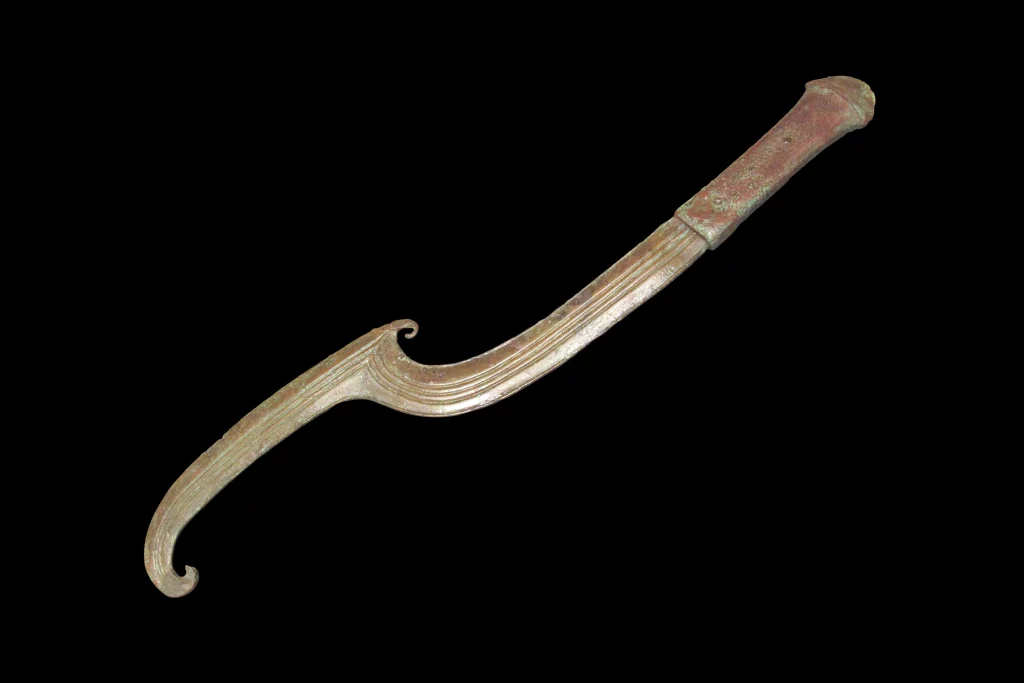
Sources
For further reading and research on Ancient Egyptian weapons, the following sources are recommended:
- History.com: Egyptian Weapons
- World History Encyclopedia: Egyptian Weapons
- History Cooperative: Ancient Egyptian Weapons
If you like this article, you should definitely give these a read:
Armor of Ferdinand I, Holy Roman Emperor
The Hercules armor of the Emperor Maximilian II

